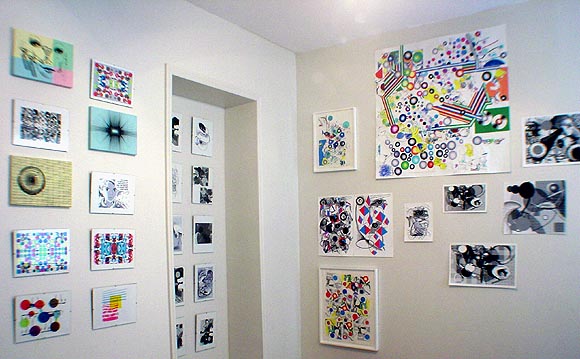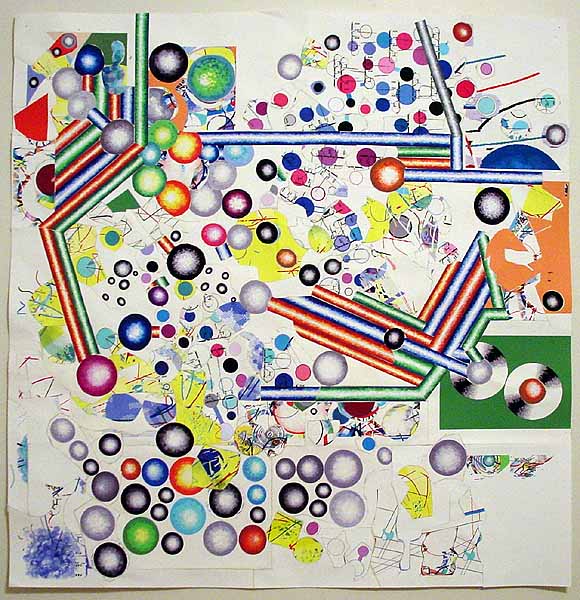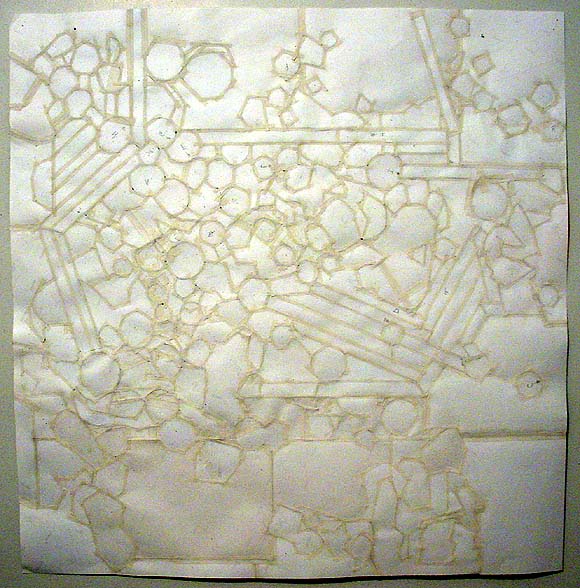thumbnail views of additional work (not linked to images on this page)
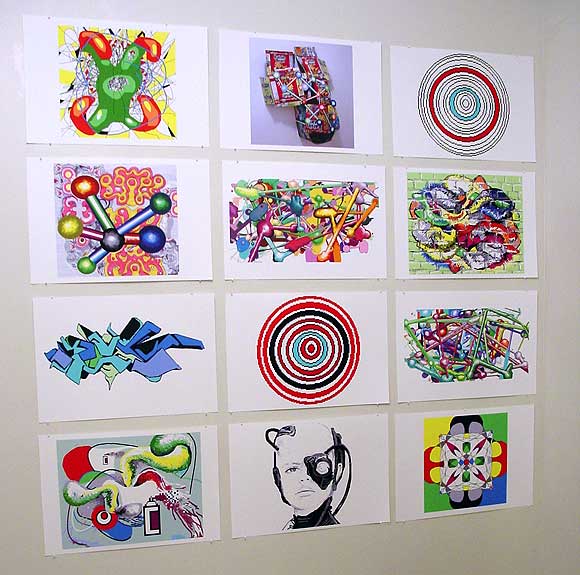
My criteria for this group of images were everything had to: (i) be printed landscape orientation, 13 x 19 inches, and (ii) have appeared on this blog since the printing of the last group of pictures done in this fashion. All are 100% rag paper, archival ink, blah blah. The grouping is at once an installation, twelve separate drawings (a term I'm stretching to include photography), a physical record of images disseminated online, and a reification of a particular slice of this blog. Some of the content I invented out of whole cloth; some are my interpretations of others' images. Except for changes in scale to fit the paper size, nothing was altered from the way it appeared online. These would be framed for a real-space presentation. Sorry if this sounds stuffy, just trying to nail down my concept.
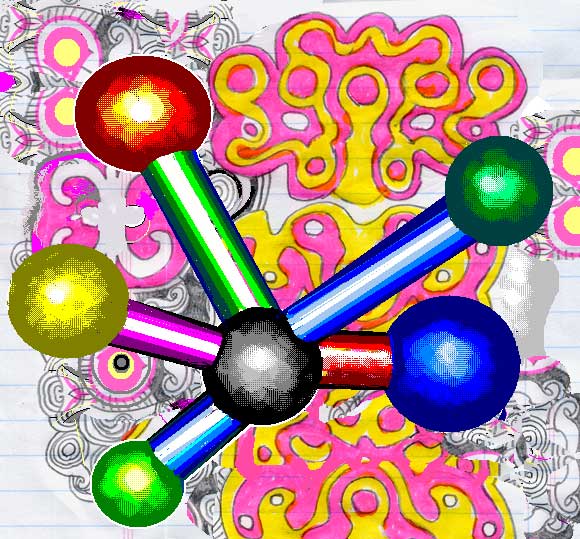
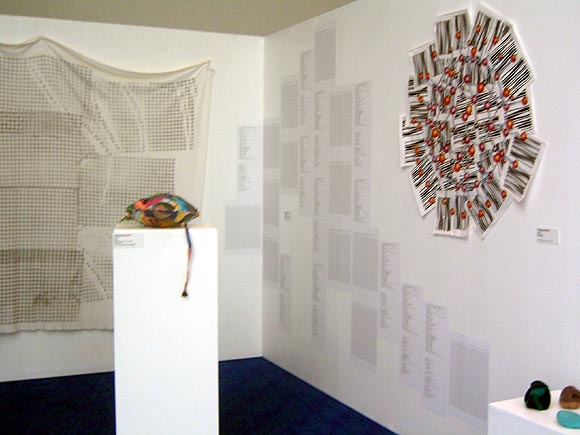
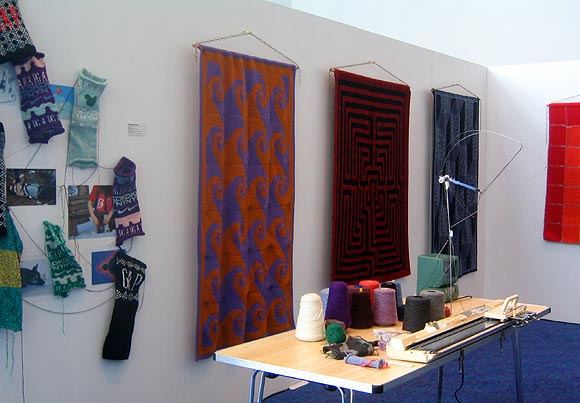
Finally got some pics of the "Fuzzy Logic" show from summer 2005, in Manchester, UK. A million thanks to Cat Mazza for these photos. The show was discussed a bit here (scroll way down). The top photo depicts Cory Arcangel's Infinite Fill Blanket, Peter Coffin's "wall-based prints bridging ASCII art and knitting patterns," a LoVid soft sound sculpture on the pedestal, my Fuzzyball paper piece upper right, and either Claire Irving's mathematical knitting or Rebecca Vaughan's "knitted cosies for uncosy environments" (not sure which--I didn't make it to Manchester for the exhibit). The bottom photo shows Cat Mazza's logoknit pieces and her knitting machine, and Woolly Thoughts' Mathematical Afghans.
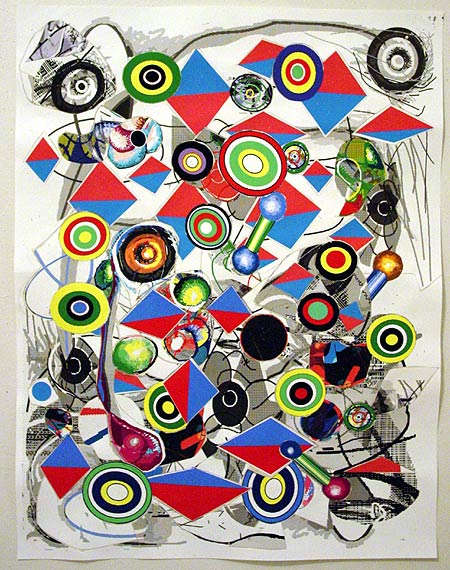
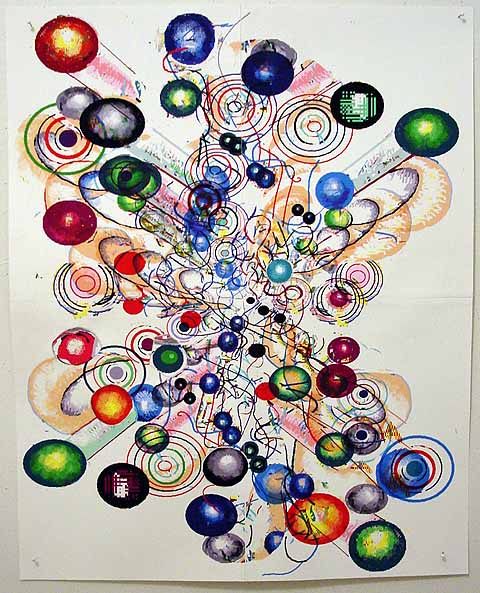
I'm thinking this piece is in the endgame phase but who knows, I could get mad and attack it again. My plan was to keep filling up the page but I'm kind of liking this double inverted tornado thing. Just saw the movie Twister again (one of my favorites) and I really like the shots at the end where they finally get data from Dorothy going up the F-5 funnel.
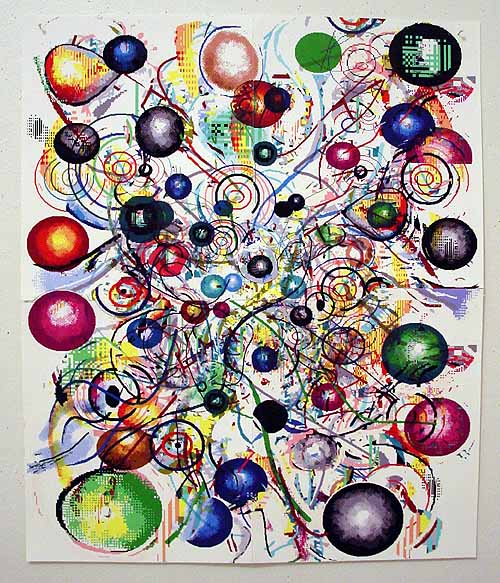
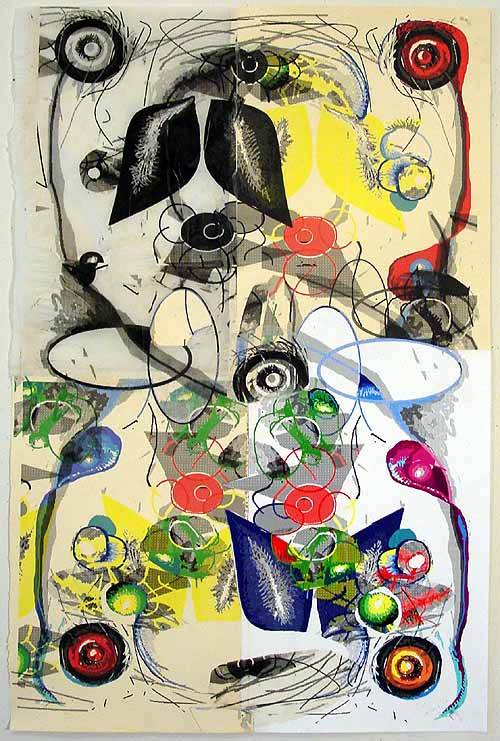
Above is the final version of the piece I'm donating to the Dieu Donne Papermill, titled Zipatone Omniverse. (I posted earlier stages and talked about this project here, but have since taken down the previous draft versions.)
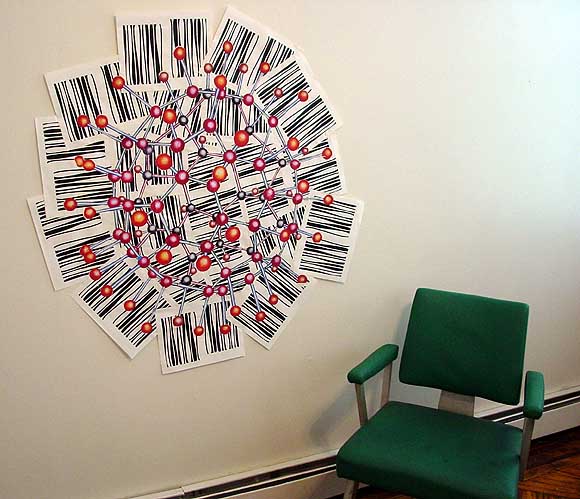
Finished the piece started over the July 4 weekend, finally. That's it above, posing with a chair. Below is the back, showing the strips of canvas-colored, gummed cloth tape that hold all the paper pieces together. The buckyball is an Epson print of a scan of a transparency of a handpainted buckyball I made years ago. The background xerox sheets are an Op art-like pattern I drew in MSPaintbrush--they would make a continuous wavy field if trimmed and arranged in a grid.
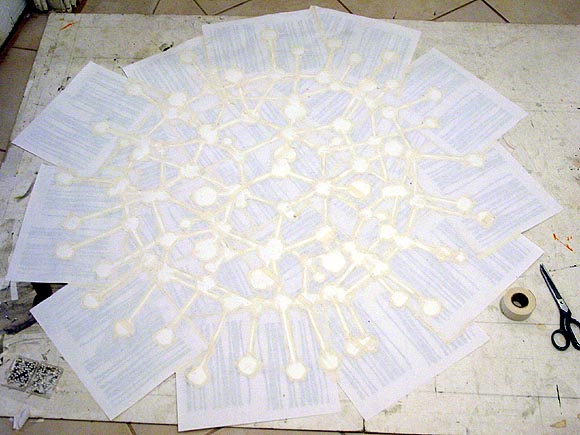
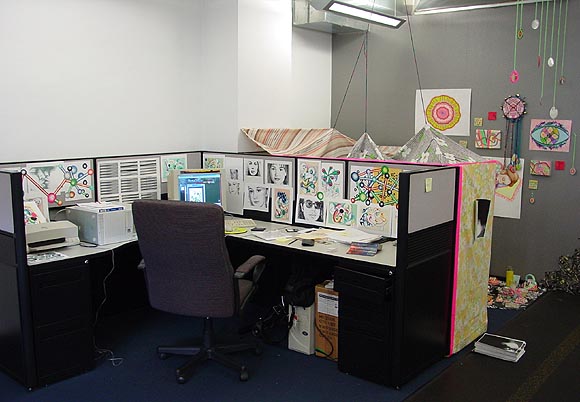
My cubicle [May 31], the last day of the ART@><*WORK show (click image for slightly enlarged view). I like the contrast between my "dude holdin' it all in" style and Erika Somogyi & Evan Greenfield's rather more expanded field behind. Below: detail of my workspace. Bear in mind it was a performance piece--this is just scenery for me sitting there for 44 hours being the office dork I am in my other life. Thanks to those who came out to witness this--your interest and support is greatly appreciated!
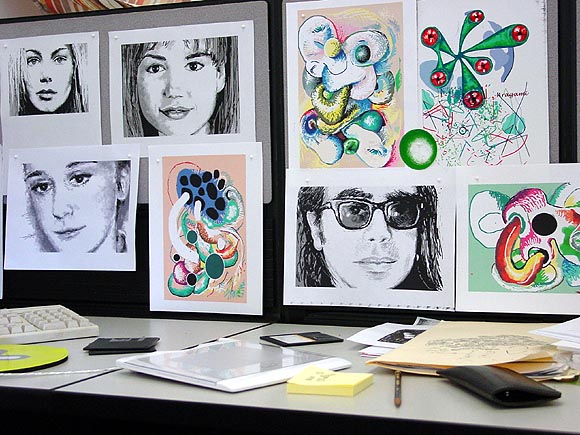
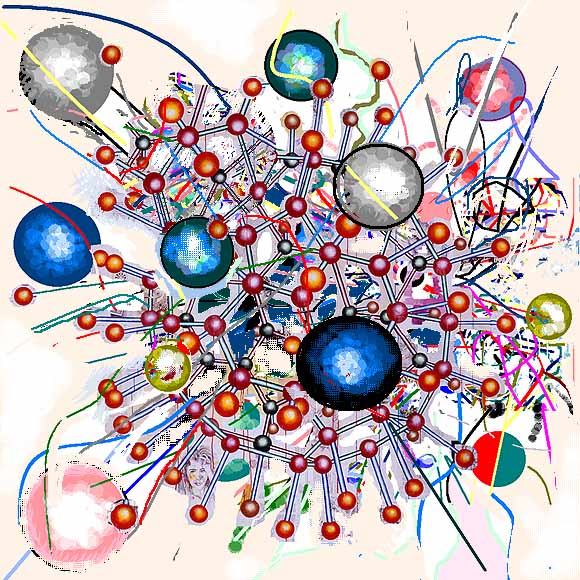
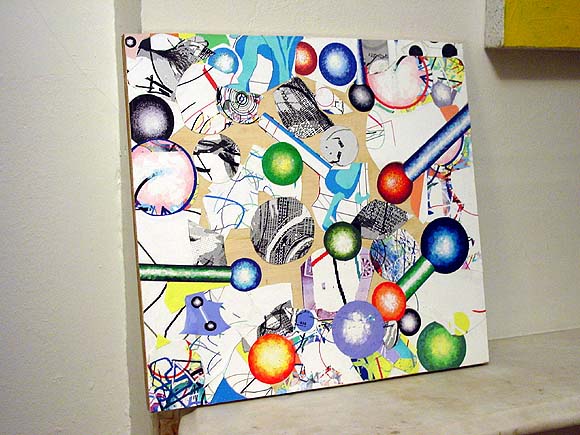
Momenta Art in Williamsburg has its annual benefit coming up and I'm donating a piece. Jeez, the last time I did this was four years ago, shortly after I started this blog. Here's to both of us still being around in the world o'ephemera that is the art scene. I tried something new with the piece above, which is gluing the paper--many little cut out pieces printed with "drawn elements" from my home computer--directly onto a piece of plywood. I was expecting to struggle more but this came together fairly quickly--I'm happy not to drag out the process. Now, if I was Fred Tomaselli I'd collector-ify the piece by pouring polyurethane goo all over it, but I kind of hate that restaurant table decoupage look so I think I'll just give it a light coat of matte fixative and call it done. I like seeing the texture of the paper clinging to the wood--I also left some wood showing on the front, which I didn't expect to do. All this could change tomorrow but I only have a few more days to screw with it.
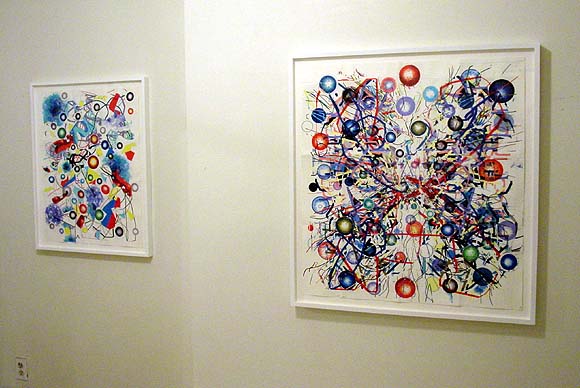
These are older pieces but the framing changes them quite a bit.
Draft of a written statement about my current work (too wordy for main page).
About the art. Moody’s work is hand-drawn in older paint programs using a mouse or stylus and abused at the printer stage, as in run through multiple times, then cut up and collaged into taped-together patchworks. This method of working goes against the grain of, or "problematizes," the computer (as the '80s theorists used to say) by introducing techniques of painstaking individualized production to an instrument designed for quick, cheap mass production. Instead of succumbing to commercial pressure for state-of-the-art upgrades, the artist moves entropically backward to older, "downgraded" programs. Recurring subjects are the hopeful, jouissant motifs of early Modernism (synthetic cubism, expressionism)--another willful regression that could be mistaken for simple conservatism--combined with the graphic cliches from the early years of computing, such as networks of bulbous molecules and spheroids. Ultimately the subject is not "the machine" but human resistance and choice in the face of the myriad controlled and managed environments of technocracy.
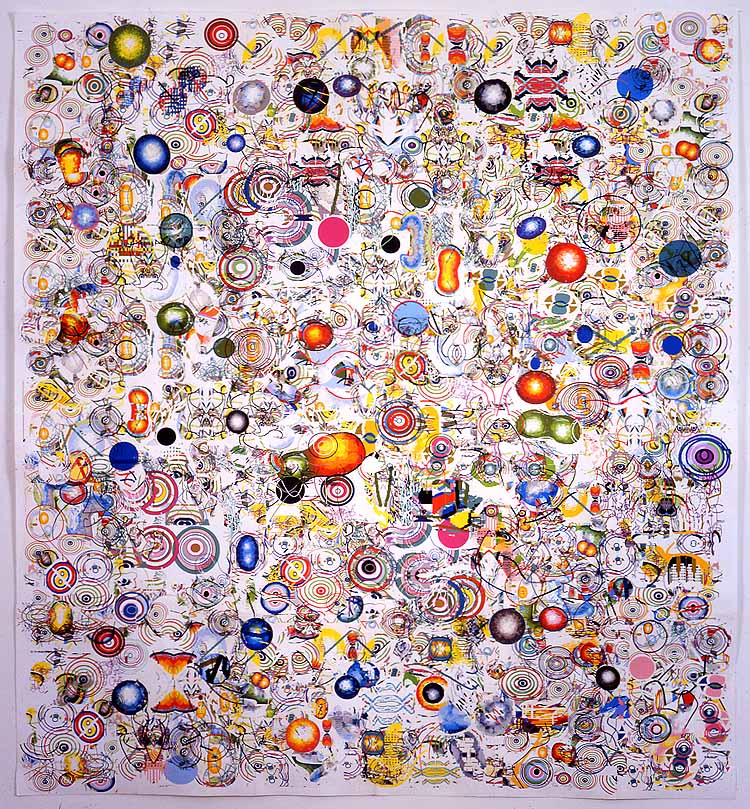
F-Factor 2, 2003-4, ink on paper, 54" X 49". Below: 2 details (closeup and super closeup).
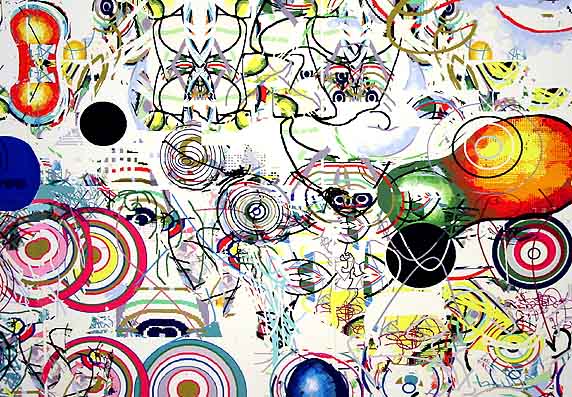
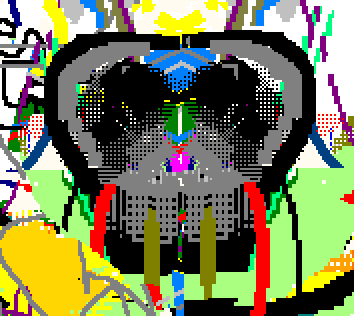
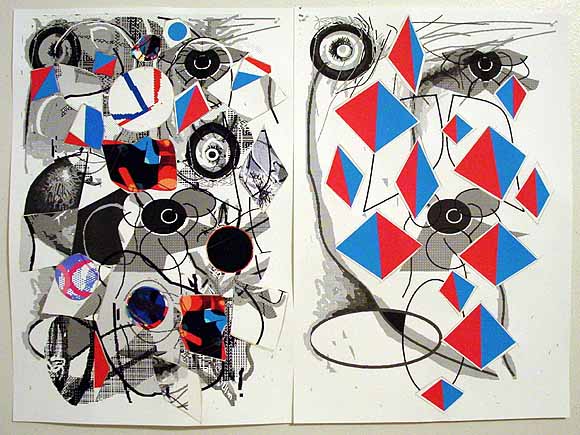
"Synthetic Synthetic Cubism"? Yeah, it's a misnomer--Synthetic Cubism was basically late, illustrational Cubism but this current work I'm doing has more in common with the early, incomprehensible Analytical phase. The director of a nonprofit gallery that only shows overtly political work visited the studio a couple of years ago and dismissed pieces of this ilk as "just Kandinsky" (also not Synthetic Cubism, but close enough). I take that as a compliment, since last I heard Mr. K. worked with paint (with all its history and baggage) and these are entirely done with a computer, printer, scissors, and tape. Masquerading as somewhat stylish drawings and paintings, they are simulacra--"robot Kandinsky." Unlike Mike Bidlo and the appropriators, though, I'm not making facsimiles of known early Modernist works. I'm actually still interested in the puzzles of representing a "vortex" or "field." How much does that "pure" field reflect the stamp of the imaging program? Can that programming be circumvented or thwarted? What is inherently "cyber" and what belongs to the pre-technological past? Those are some of the issues here.
